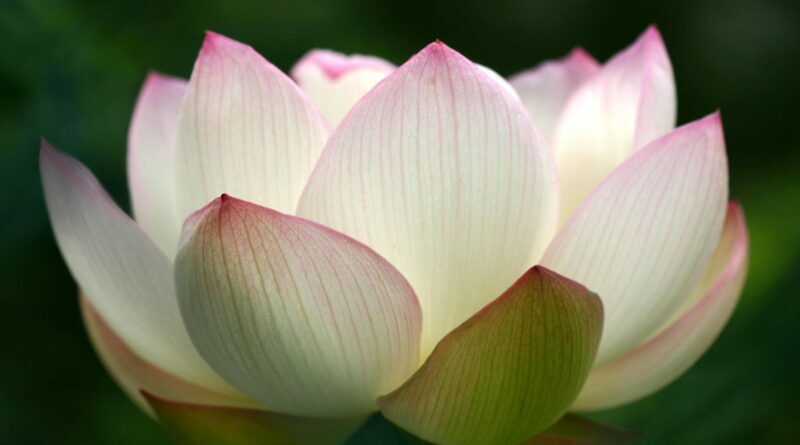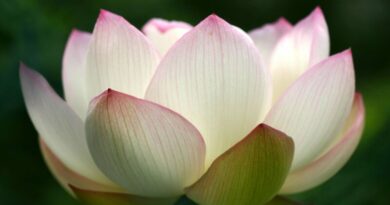ONE THING CLEAR THROUGH
One Thing Clear Through
A recurrent theme in the teachings of the forest ajaans is that all the steps of the practice are of a piece. In other words, having attained Awakening, they don’t say anything disparaging about the early steps in the practice, that they’re only elementary and that you have to drop them to move on to the more important stuff. As Luang Pu Dune put it, “The Dhamma is one thing clear through.” Or as Ajaan Maha Boowa once said, one of the realizations that comes when you hit Awakening is that everything is the same teaching, starting from generosity and gratitude, all the way up through Awakening. There are different levels of subtlety, but it’s all the same principle.
And you could see this fact in their lives. Even having attained Awakening, they didn’t just sit around and say, now that their own job was done, they didn’t have to do anything further. They were very industrious people. Ajaan Fuang, even when he was sick, would get out every evening and do some chore around the monastery. When we were doing construction work, he wasn’t up to doing any of the heavy jobs but at the very least he would go out and pick up the thrown-away nails. He was very frugal, very meticulous.
So it’s important to keep this principle in mind: that the practice here is a practice of generosity, of gratitude, of goodwill and kindness, all the way through. Look at the Buddha’s teachings on the four noble truths. What are they motivated by if not goodwill? The desire for an end of suffering, the desire for happiness that doesn’t place any burdens on anyone else: What is this if not compassion?
And look at his teaching career. Wherever there was anyone ready to learn the Dhamma, he would go there. In those days, that meant going on foot. He traveled all over northern India on foot just to teach. Even the very last day of his life, he knew there was one more person he had to teach before he entered total nibbana. So, even though he was suffering from dysentery, he walked all the way to Kusinara — a full day’s walk — because there was one more person, Subhadda, he had to teach.
What this means in our practice is that we should value all levels of the practice. It’s not that you put in time with the elementary levels and then drop them as you move on to the higher ones. You simply add more and more levels of subtlety to your practice, more and more levels of generosity, goodwill, and gratitude. The Buddha started his teaching with very basic mundane right view: the teaching on kamma. And he introduced kamma with two teachings: one on gratitude, one on generosity.
He started out by saying that generosity is real. The gifts you give actually benefit you and the other person. This is something of real value. And you can think of the whole practice — all the way through the abandoning of greed, anger, and delusion — as an act of generosity, an act of goodwill. The less greed, anger, and delusion you have, the better off not only you are, but also everybody else. Think of all the suffering you’ve inflicted not only on yourself but also on other people through your anger, your greed, your delusion. You give these things up not only for your own benefit but for the benefit of the people around you as well.
Then there’s the teaching on gratitude. The Buddha focused on the gratitude we owe our parents — that the good they’ve done for us is something of value. We really are in their debt. All that your mother went through just to give birth to you: Think about that. In Thailand it’s traditional for there to be a chant on this topic before an ordination. They hire somebody to come in, and he chants for a couple hours about all the hardships your parents went through to raise you, as a way of reminding you of your debt to them. In Thailand, there’s a very strong sense that you ordain as an act of gratitude to your parents. You dedicate the merit to them. So right before the ordination they remind you of exactly how big that debt is. If the chant lasts for four hours, three and a half of the hours are about the pains your mother went through being pregnant with you. You’re fortunate she didn’t abort you — she could have done that. You’re fortunate your parents didn’t abandon you after you were born — they could have done that as well. They went to all that trouble to raise you, to teach you how to speak, how to sit, how to walk. There’s a huge debt of gratitude you owe them.
As the Buddha said, gratitude is a sign of a good person. If you don’t appreciate the good that other people have done for you, it’s very unlikely that you’re going to do good for anybody at all. Ajaan Fuang, if he noticed that people didn’t have gratitude for their parents, didn’t want to associate with them. If people can’t appreciate their parents, what are they going to appreciate? Gratitude is essential to every form of goodness.
And it carries you all the way through. This is why we’re generous; this is why we practice the precepts, why we’re harmless. We meditate to train the mind so that it’s harmless. Not only harmless, but also more energetic. If you’re not weighing yourself down with greed, anger, and delusion, you have a lot more energy to help other people. And even though there’s that popular conception of Theravada as a selfish path, as someone who had studied Buddhism both in Japan and in Thailand once said, you won’t find that Thai people are any more selfish than Japanese people. In fact, it can often be the other way around.
The example of the Buddha in the Pali Canon is not a selfish example. Sariputta and Moggallana were extremely helpful not only in teaching other monks but also in teaching laypeople. And look at all the rules in the Vinaya for the monks to look after the monastery. Basically, the monastery is pure generosity. If you were to open your eyes right now and look around, everything you’d see would be somebody’s gift. And as for the monks, the longer you live as a monk, the more and more the very bones of your body are the results of somebody’s generosity. They say that after seven years all the cells in your body have been changed, so once a monk has hit seven years, his whole body is somebody else’s gift. So you’ve got to use it wisely, generously, in the same spirit with which it was given to you. And as for the monastery around you, you’re trained to look after the place. The Buddha encouraged the monks to be clean, to be careful in the way they use things, to put a lot of energy into looking after the results of other peoples’ generosity.
In the forest tradition, there’s a very strong tradition of keeping alive the protocols that the Buddha gives in the Khandhakas. There’s a Vinaya textbook that the monks in Thailand are supposed to study, written by a city monk back at the beginning of the twentieth century, and he cut back on a lot of these rules. This textbook was never popular with the forest tradition. They preferred an older book that went into a lot of detail, particularly on the 14 protocols, most of which deal with looking after the monastery: when you come to a monastery, how you’re supposed to set things in order; when you leave, how you’re supposed to leave it in good shape; and while you’re there, how you keep it clean. A lot of energy should go into keeping the monastery in good shape because a lot of energy went into giving the monastery in the first place.
So the Buddha never discouraged people from being generous. He never discouraged people from being energetic. Ajaan Suwat liked to make this point again and again: There’s no place where the Buddha encourages laziness. Even though he teaches contentment, it’s contentment with the material things you already have, so that you can devote yourself to building on that, and especially so that you can devote yourself to the training of the mind. But contentment doesn’t mean that if you find the place dirty you leave it dirty. Contentment means that if you just have a little shack, you’re content with your shack, but you make it a clean shack. You keep it spic and span, in good repair. Utthana-sampada is the word in Pali. It means that you take initiative, you’re energetic.
And this translates into your meditation. The sort of person who’s energetic in keeping the place clean tends to be more energetic in meditating. Once when I’d just arrived in Bangkok on some visa business, I was in the midst of cleaning my room, sweeping it, wiping it down. A Western monk who’d just returned from Burma knew that I might be there, so he came around and sure enough I had just come in. But as soon as he saw me wiping down the floor, he said, “You Thai monks! All you do is spend your time cleaning up. Over in Burma, we have other people who do that for us.” And as you looked at the quality of his meditation, you could see that he was used to having other people doing things for him. His meditation had gotten slack and sloppy as well.
This is a strong tradition in the forest tradition, starting from the time of Ajaan Mun. He was very diligent in keeping his place clean. His place in the forest wasn’t just some hovel. Everything was neatly swept, everything in its proper place. As Ajaan Fuang said, even the rags for wiping feet at the base of the stairs to his little hut: If they were torn, he would sew them; if they were dirty, he would wash them. And this quality of being energetic and meticulous translated into his meditation as well.
So don’t think that the elementary practices are just for people on an elementary level. They’re for everybody. That’s how everybody gets started and everybody keeps going. You build on them. You don’t abandon them. You build on them. You include more and more subtle levels. But the basic levels stay there as well, until, as the texts say, generosity is no longer something you do for your own sake or for the sake of other people. It becomes just a natural expression of the mind. All the steps of the practice become a natural expression of the mind once it’s fully trained.



